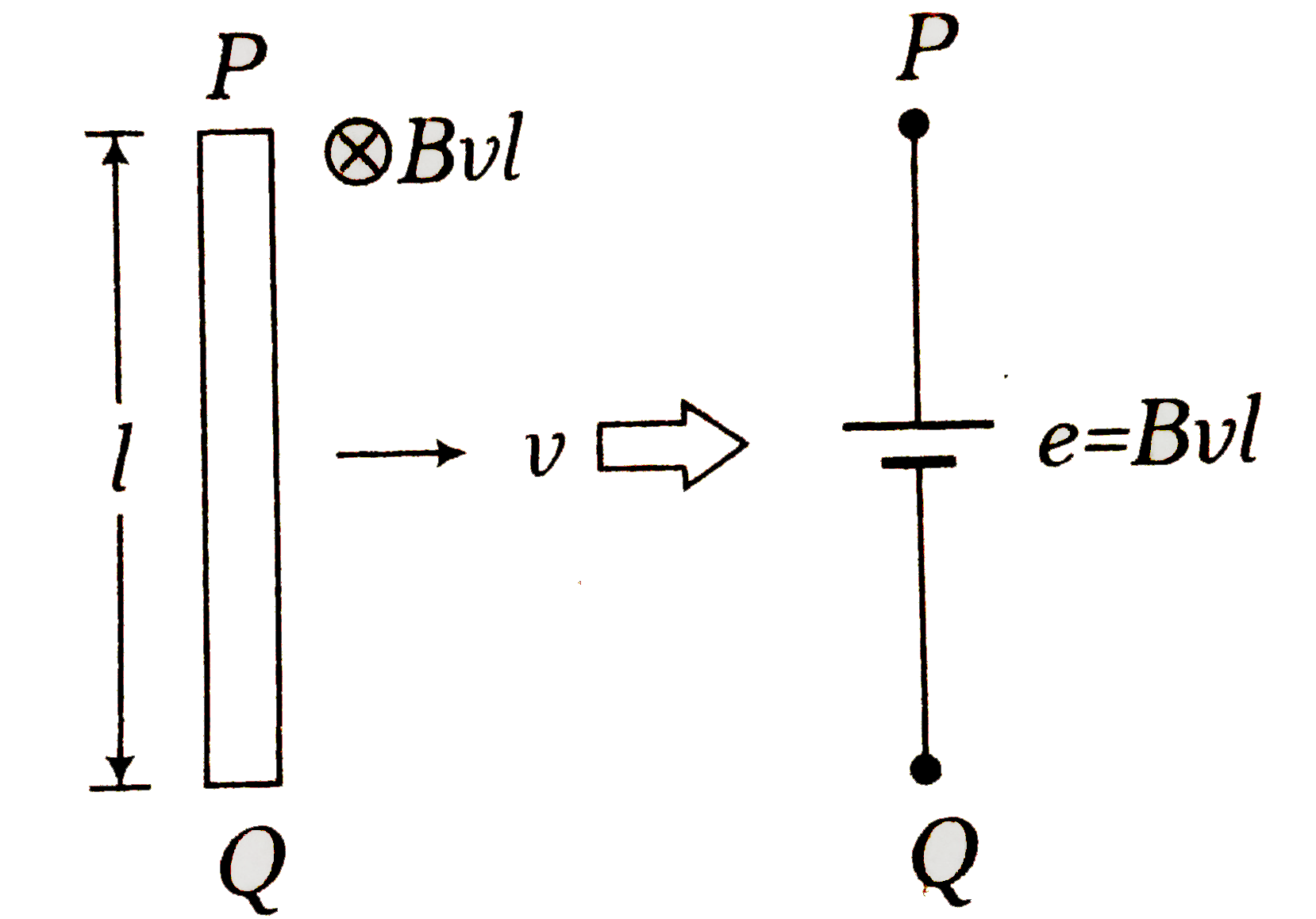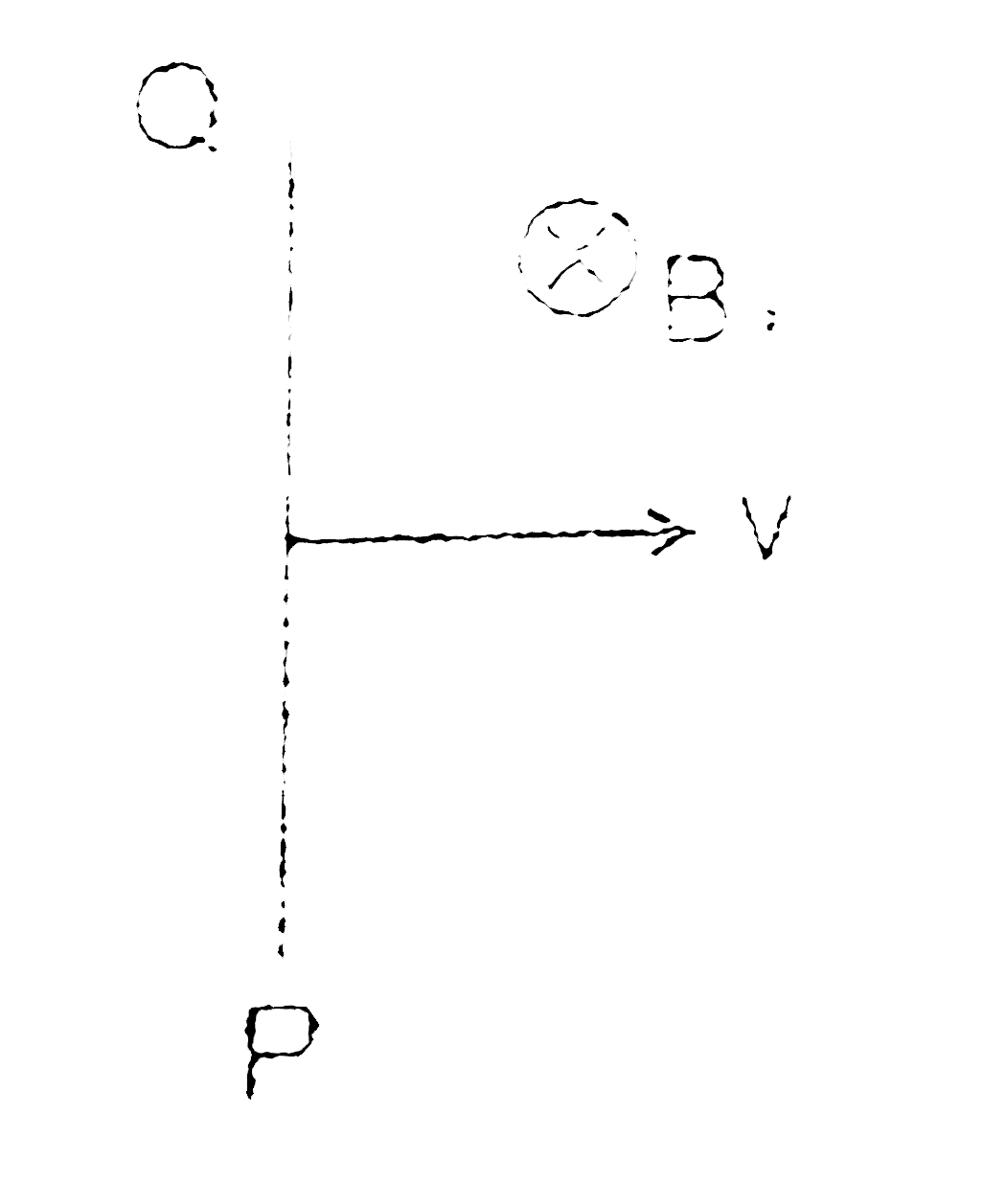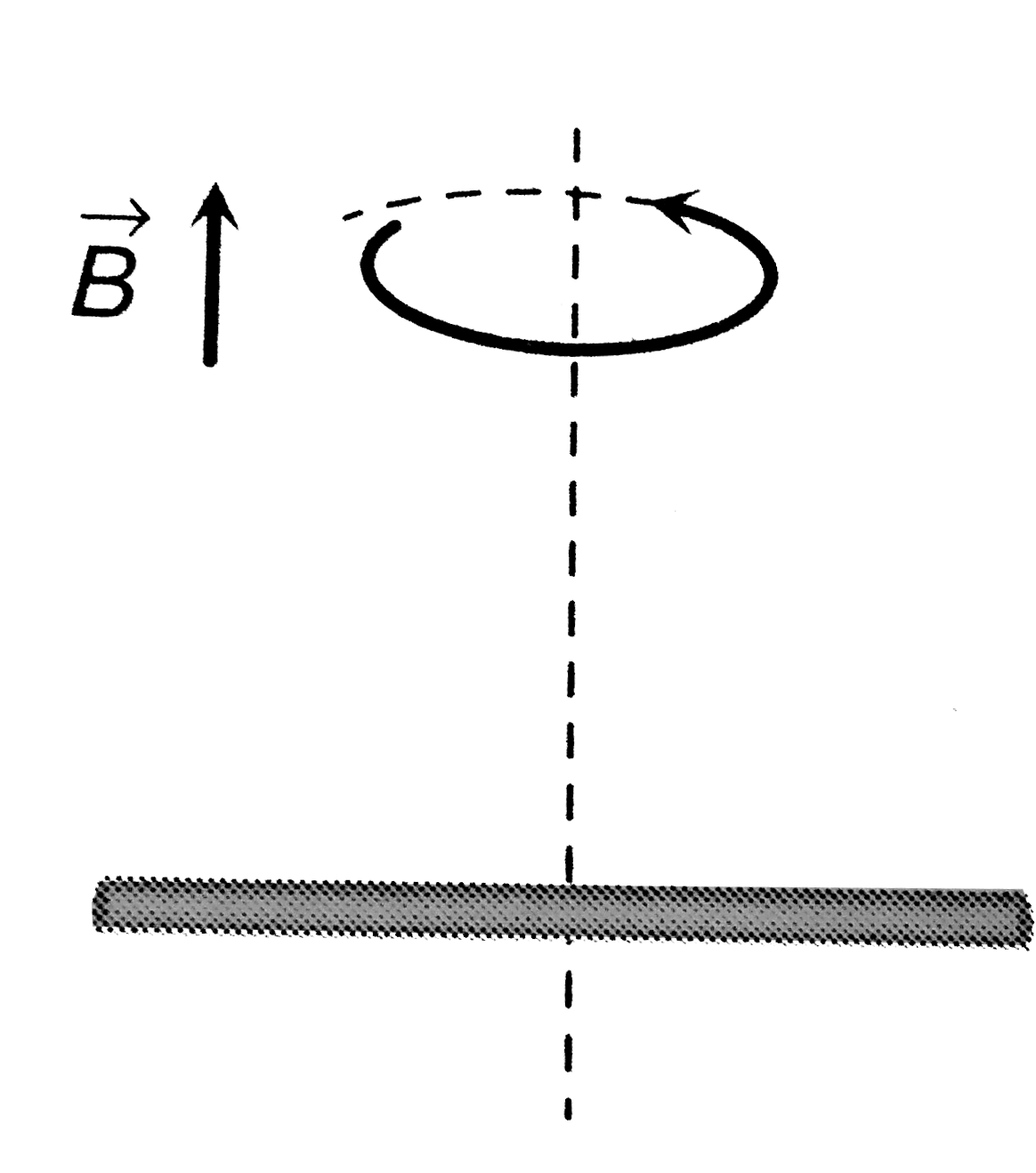A conducting rod of unit length moves with a velocity of 5m/s in a direction perpendicular to its length and perpendicular to a uniform magnetic field of magnitude 0.4T. Find the emf induced between the ends of the stick.

The nagative terminal is that is that end towards which electrons are moving due to magnetic force and, the magnetic force on electron is acting along Q, hence Q is negative terminal of battery.

As, we know that induced emf for a moving rod is given by
⇒ e=Bvl=0.4×5×1=2V
Topper's Solved these Questions
- BOOK - DC PANDEYCHAPTER - ELECTROMAGNETIC INDUCTIONEXERCISE - Example Type 13videos
ELECTROMAGNETIC INDUCTION
- BOOK - DC PANDEYCHAPTER - ELECTROMAGNETIC INDUCTIONEXERCISE - Example Type 22videos
ELECTROMAGNETIC INDUCTION
- BOOK - DC PANDEYCHAPTER - CURRENT ELECTRICITYEXERCISE - Medical entrances gallery97videos
CURRENT ELECTRICITY
- BOOK - DC PANDEYCHAPTER - ELECTROMAGNETIC WAVESEXERCISE - Sec C22videos
ELECTROMAGNETIC WAVES
Similar Questions
A metallic wire PQ of length 1 cm moves with a velocity of 2m/s in a direction perpendicular to its length and perpendicular to a uniform magnetic field of magnitude 0.2 T. Find the emf induced between the ends of the wire. Which end will be positively charged.
 View Solution
View SolutionA metallic metre sitck moves with a velocity of 2 ms ^(-1) in a direction perpendicular to its length and perpendicular to a uniform magnetic field of magnitude 0.2 T. Find the emf indcued between the ends of the stick.
View Solution
Knowledge Check
- Question 1 - Select One
A metallic meter stick moves with a velocity of 2m/sec in a diretion perpendicular to its length and perpendicular to a uniform magnetic firld of magnitude 0.2T . The emf induced between the ends of the stick
A0.2VB0.4VC0.5VD0.6V - Question 2 - Select One
A straight conductor of length 1.5m moves in a uniform magnetic field of induction 5×10−3T with a velocity of 5m/s in a direction perpendicular to its length and also perpendicular to the field. The e.m.f. induced between the ends of the conductor is
A1.5×10−3VB3.75×10−3VC37.5×10−3VD25×10−3V - Question 3 - Select One
A metal rod of length 2m is rotating with an angular velocity of 100rad/sec in a plane perpendicular to a uniform magnetic field of 0.3T. The potential difference between the ends of the rod is
A30VB40VC60VD600V
A metallic wire PQ of length 1cm moves with a velocity of 2m/s in a direction perpendicular to its length and perpendicular to a uniform magnetic field of magnitude 0.2T.Find the emf induced between the ends of the wire.Which end will be positively charged.
 View Solution
View SolutionA wire of length 10cm translates in a direction making an angle of 60∘ with its length. The plane of motion is perpendicular ot a uniform magnetic field of 1.0 T that exists in the space. Find the emf induced between the ends of the rod if the speed of translation of 20 cm s^(-1).
View SolutionA metallic metre stick translates in a direction making an angle of 60∘ with its length.The plane of motion is perpendicular to a uniform magnetic field of 0.1T that exists in the space.Find the emf induced between the ends of the rod if the speed of translation is 0.2m/s.
View SolutionA metal rod of length 2 m is rotating with an angualr velocity of 100rads−1 in plane perpendicular to a uniform magnetic field of 0.3 T. The potential difference between the ends of the rod is
View SolutionA conducting rod of length 2l is rotating with constant angular speed w about its perpendicular bisector. A uniform magnetic field B exists parallel to the axis of rotation. The e.m.f. induced between two ends of the rod is
 View Solution
View Solution

